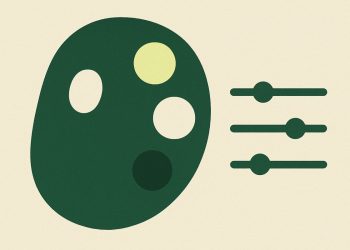Anthropic’s Claude Opus 4.5 is setting a new industry standard for AI coding, delivering best-in-class software engineering performance that surpasses rival models. Early benchmark data reveals the model not only dominates rigorous coding tests but also outperforms top human candidates on a timed engineering exam, signaling a major shift in AI capabilities.
This analysis explores the benchmark results, technical upgrades, and workforce implications of Opus 4.5, explaining why hiring managers are already recalibrating their expectations for software development.
Benchmark Data: A New Industry Leader
Anthropic’s Claude Opus 4.5 demonstrates superior engineering capabilities by outscoring all previous human applicants on a two-hour performance test. It is also the first AI to break the 80% barrier on the SWE-Bench Verified benchmark, establishing a significant lead over competitors like Google’s Gemini Pro.
Opus 4.5 achieved an 80.9% score on SWE-Bench Verified, becoming the first model to surpass the 80% threshold. For comparison, Google’s Gemini 3 Pro scores 76.2%. The new model also excels in agentic tasks, scoring 88.9% on τ2-bench-lite and 59.3% on Terminal-bench, which measure its ability to handle complex, multi-step workflows and command-line operations. The most significant result comes from a two-hour performance-engineering assessment, where Opus 4.5 scored higher than any human applicant to date – an achievement detailed in Business Insider coverage.
Inside the Upgrade: Memory, Reasoning, and Security
The performance gains in Opus 4.5 are driven by three core engineering improvements:
- Expanded Context: A 200K-token context window with threshold-based summarization allows for continuous, long-running conversations without hard resets or loss of key facts.
- Enhanced Security: Structured instruction tuning hardens the model against manipulation, reducing prompt-injection success rates to below 2% in lab tests.
- Advanced Computer Vision: A refined interface for computer interaction enables pixel-level screen inspection, which dramatically improves UI test automation.
These upgrades enhance the model’s reliability in agentic workflows involving file management, terminal commands, and error correction.
Workforce Impact and Shifting Skill Demand
As AI models like Opus 4.5 automate routine tasks, the job market is adapting. Morgan Stanley research projects a 13% decline in entry-level coding roles by 2026. However, salaries for engineers skilled in orchestrating, auditing, and debugging AI-generated code are seeing an 18% premium. According to the Stanford Digital Economy Lab, the developer role is evolving from pure coding to curating and integrating AI-driven components within complex system architectures.
Pricing, Access, and Competitive Context
With its superior tooling scores, lower latency, and competitive pricing, Claude Opus 4.5 is positioned as the go-to solution for companies prioritizing reliable and deterministic software delivery. Enterprise pilots are already integrating the model into CI/CD pipelines across the finance, e-commerce, and health-tech sectors, with public case studies anticipated later this year.
How does Claude Opus 4.5 actually perform against human engineers?
On Anthropic’s internal performance-engineering take-home exam, the model out-scored every human candidate who has ever taken the two-hour test when granted parallel test-time compute. This is the first time an LLM has beaten all human baselines on a hiring-style assessment rather than a public academic benchmark.
What do the public benchmarks show?
- SWE-Bench Verified: 80.9% – the first model to cross the 80% line
- Agentic tool-use (τ2-bench-lite): 88.9%
- Complex tool coordination (MCP Atlas): 62.3%, almost 50 points ahead of Sonnet 4.5 (43.8%)
The 4.7-point gap versus Gemini 3 Pro on SWE-Bench is the largest lead any model has held in that test since early 2025.
Is the model cheaper or more expensive to run?
Opus 4.5 is both faster and cheaper than its predecessor:
– Token price cut to $5 / $25 per million input/output tokens
– Context window stays at 200k, but persistent summarization keeps long chats inside budget by compressing older turns without losing key facts
How safe is it against prompt-injection attacks?
Anthropic’s internal red-team results show lower successful injection rates than Opus 4.1, although the company has not released a public figure. Independent work on similar systems (e.g., StruQ) has pushed manual attack success below 2%, suggesting the techniques inside Opus 4.5 are at least that robust.
Will this replace junior developers?
Entry-level job postings dropped 13% in 2025, but overall software-head-count is still projected to grow 1.6-10% annually through 2029. Employers are reposting roles to ask for “AI orchestration” and “agent oversight” skills instead of raw lines-of-code velocity. In short, the job is changing, not disappearing.



















